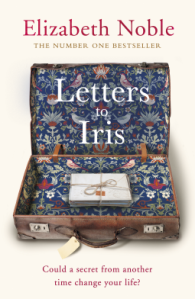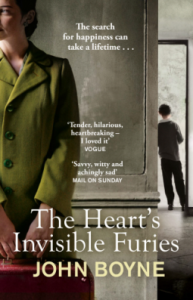
Description:
Tess has a secret – one which is going to turn her life upside down in just nine months’ time. The only person she can confide in is her beloved grandmother. But Iris is slipping further away each day. Then chance brings a stranger into Tess’s life. Gigi’s heart goes out to Tess, knowing what it’s like to feel alone. She’s determined to show her that there’s a silver lining to every cloud. As their unlikely friendship blossoms, Tess feels inspired to open up. But something still holds her back – until she discovers Iris has a secret of her own. A suitcase of letters from another time, the missing pieces of a life she never shared. Could the letters hold the answers that Tess thought lost for ever? An uplifting, unforgettable story about keeping secrets, taking chances and finding happiness where you least expect it.
*********
I enjoyed this book very much. I think the first thing that attracted me was the cover. According to the description it’s “a gloriously uplifting story about love in all its forms… “ This is definitely true!
Letters to Iris is about family relationships, friendship, secrets, old love, new love, the beginning and ending of love, rekindling of love, Loss, joy, hope.. Wonderful.
Tess is 35 and unexpectedly pregnant. When she eventually tells him, her boyfriend Sean doesn’t want her to have the baby. He has been offered a job in New York and wants Tess to go with him. They break up. Tess is very close to her 95 year old grandmother Iris who brought her up but now has dementia. She has a difficult relationship with her mother Donna.
Gigi is married to Richard and has three adult children and a baby granddaughter. She’s beginning to feel that she’s taken for granted and that she and her husband Richard are growing apart.
Iris is taken into hospital and subsequently moves into a nursing home. The dementia is getting worse and her capacity to understand is disappearing. Tess tries to tell her about the baby but knows her gran doesn’t really take in what she’s saying.
Tess and Gigi meet by chance at the nursing home when Gigi is visiting her father in law who also has dementia and despite everything become friends. Both have made huge changes in their lives – Tess broke up with Sean and moved into her mother’s house while her mother was overseas. Gigi separated from her husband Richard and moved into a flat on her own.
Gigi is a lovely character: caring and warm-hearted. She’s concerned about Tess and and as their friendship grows, Tess starts to open up a bit.
There is a bit of depth to the main characters. I felt as if I knew them. The other characters are interesting too – Gigi’s family, Tess’ friend Holly and her family and Donna. They also have their stories.
Secrets from the past are revealed when Tess is clearing out her gran’s house. Tess and her friend come across an old suitcase containing photos and letters to her grandmother. As Tess went through it she discovered things about her grandmother’s earlier life she had never known about. Tess had never met her grandfather Wilfred but Iris only talked about him and their small family – Donna and Tess – no other family. That was all quite emotional.
I thought the letters that Tess wrote each month to her unborn baby were lovely – a sort of progress report of the pregnancy and other thoughts.
The author skillfully brings all the various threads together to create a well-written, ultimately heart-warming, story.

